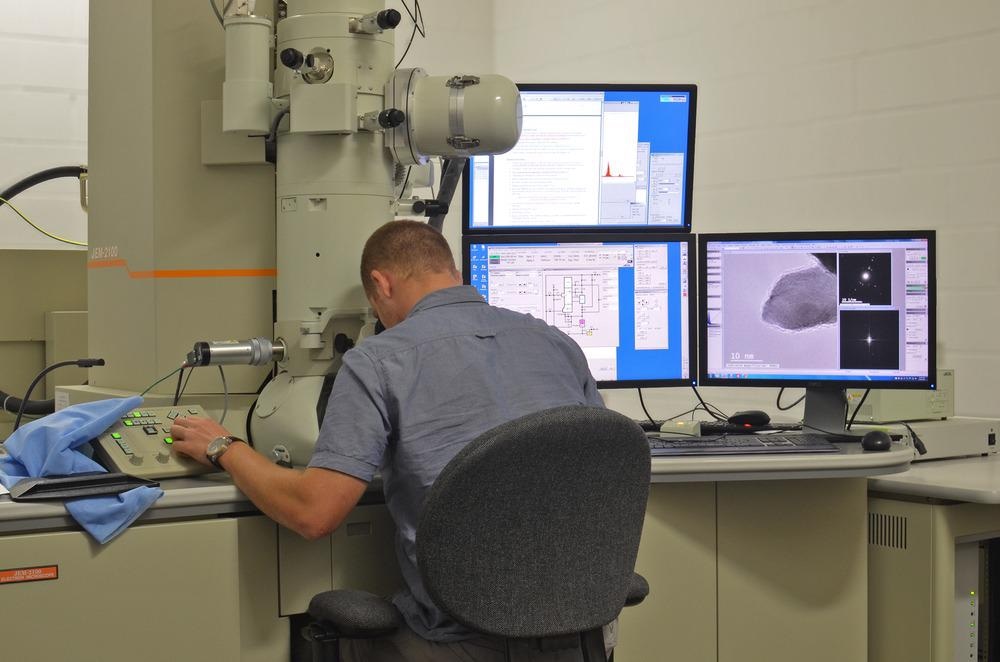The invention of the electron microscope in 1931 ushered in a new era of science. For the first time, scientists could see atoms when previously, their existence had merely been theorized. This new technology offered a window to view life as it had never been seen before.

Image Credit: Rui Serra Maia/Shutterstock.com
Scientists could see the cells that form the building blocks of plant and animal life, and our knowledge of biological systems significantly deepened. Physicists were able to understand the interactions between molecules at the atomic level, changing our understanding of the universe.
More recently, electron microscopes have helped chemists further their knowledge in biochemistry, catalysis, electrochemistry, nanoparticle chemistry, and soft-matter science. Unsurprisingly, Ernst Ruska, the creator of the electron microscope, was awarded the Nobel Prize for Physics in 1986. Ruska’s invention helped move science forward in the decades after he created the electron microscope. Today, it continues to further our knowledge of various scientific fields.
Electron microscopy is currently moving into a new era. The technology will be combined with the emerging scientific fields of artificial intelligence and data science to reach its full potential. Here, we discuss the current developments in leveraging automation in electron microscopy, how this may evolve in the future, and what impact this will make.
Current Developments in Electron Microscopy
Electron microscopy is fundamental to furthering the sectors of energy, materials science, and medicine, to name a few. However, current electron microscopy technology is limited. While it produces vast amounts of data, it lacks an integrated system of data analysis. Therefore, scientists are left with unprecedented volumes of data to sift through to find the answers they are searching for.
There are suggestions that enabling electron microscopy to reach its full potential requires the urgent establishment of integrated, data-driven microscopy architecture. With this, further key transformative discoveries can be accomplished in the coming years.
Emerging challenges in energy storage, quantum information sciences, and materials design have pushed for a complete restructure of the electron microscope platform. One that leverages automation would open the window to advancements in these fields that are currently theoretical. A new system that integrates artificial intelligence and machine learning into electron microscopy at every workflow level is thought to be the solution.
Electron microscopy has reached the point where it collects more data than scientists can handle without sophisticated analytical artificial intelligence and machine learning tools to manage the data flow. To fully harness these vast levels of data, the complete process of electron microscopy must be reassessed. Currently, scientists such as Steven Spurgeon at the Pacific Northwest National Laboratory (PNNL), Washington, are rethinking this technique’s workflow.
Current processes are hindered by outmoded operating models that make it challenging to extract meaning from vast volumes of data. At PNNL, the team led by Spurgeon are looking to fix this by creating a next-generation microscope platform that integrates analytics and control architecture
However, the platform is not yet ready to be rolled out across laboratories worldwide. The team continues to leverage automation, domain-grounded data pre-processing, and data analytics to extract statistical information that gives meaning to the data collected by the electron microscope.
How Will Automation in Electron Microscopy Continue to Evolve in the Future?
The seamless integration of automation alongside electron microscopy will continue to be a key goal moving forward. Significant improvements to its components, including lenses that have resulted in greater resolutions, have pushed the capabilities of the electron microscope forward, while the analytical capabilities have been left behind. Research in the coming years will look to re-stabilize this imbalance.
Additional fields of science have adopted automation and data science into other analytical and visualizing technologies, such as single-particle cryo-EM analysis and X-ray crystallography. These techniques may even be looked to as a point of inspiration to help researchers leverage automation into electron microscopy. Although it is yet to make the same leap forward, current research looks to improve electron microscopy’s standings.
The Impact of Leveraging Automation in Electron Microscopy
The integration of automation in electron microscopy will result in the capability to generate more meaningful physical models for technologically relevant systems. It will overcome the limitations of traditional microscopy in terms of analyzing and integrating large datasets. Furthermore, the technology can become less labor-intensive and more cost-effective, limiting the need for skilled workers.
The work currently happening at PNNL marks a significant step towards achieving these ambitions. It will also be fundamental in realizing the goals set by the federal multi-agency initiative known as the Materials Genome Initiative.
Overall, leveraging automation in electron microscopy will facilitate future advancements in other fields of science, likely in all that currently rely on this technology as well as those that may find a use for it in the future.
References and Further Reading
Spurgeon, S., Ophus, C., Jones, L., Petford-Long, A., Kalinin, S., Olszta, M., Dunin-Borkowski, R., Salmon, N., Hattar, K., Yang, W., Sharma, R., Du, Y., Chiaramonti, A., Zheng, H., Buck, E., Kovarik, L., Penn, R., Li, D., Zhang, X., Murayama, M. and Taheri, M., (2020) Towards data-driven next-generation transmission electron microscopy. Nature Materials, 20(3), pp.274-279. Available at: https://doi.org/10.1038/s41563-020-00833-z [Accessed August 2021].
Papich, K., (2021) Electron microscopy in the age of automation. [online] Phys.org. Available at: https://phys.org/news/2021-07-electron-microscopy-age-automation.html [Accessed August 2021].
Mastronarde, D., (2005) Automated electron microscope tomography using robust prediction of specimen movements. Journal of Structural Biology, 152(1), pp.36-51. Available at: https://doi.org/10.1016/j.jsb.2005.07.007 [Accessed August 2021].
Weldon, A., (2021) Researchers publish roadmap to harness data science and artificial intelligence for electron microscopy. [online] Phys.org. Available at: https://phys.org/news/2021-03-publish-roadmap-harness-science-artificial.html [Accessed August 2021].
Disclaimer: The views expressed here are those of the author expressed in their private capacity and do not necessarily represent the views of AZoM.com Limited T/A AZoNetwork the owner and operator of this website. This disclaimer forms part of the Terms and conditions of use of this website.